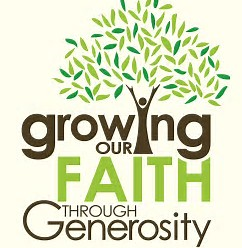April 16, 2020 in Public Health, Stewardship
7 Ways to Keep Donations Flowing During the Covid-19 Crisis

Stewardship expert Rob Blezard, one of our workshop leaders at our Stewardship Extravaganza in January, outlines steps your church can take to address the financial challenges created by the COVID-19 crisis. Key strategies include staying in communication with donors, including an offering time in online worship, and considering the CARES relief program.
Your congregation may have curtailed in-person services and activities because of the coronavirus, but there’s no stopping your congregation’s payroll, mortgage, and other financial obligations. And because so many congregants give only when they show up for worship, canceling services can present real financial challenges.
Wise church leaders will want to be proactive and do all they can to help their congregants stay connected to church, get through this emergency, and be invited to maintain financial support. Here are some ideas:
No one action or practice will ensure the financial stability of your congregation, but strategically putting enough elements in place will provide a strong framework for sustainable ministry.
- CARES Act relief
The Paycheck Protection Program of the U.S. Government’s Coronavirus Relief Package offers loans to small businesses (including churches) to help keep workers employed during this emergency. Here’s the kicker: The loans do not have to be repaid as long as your church follows closely some pretty simple criteria. Check out an excellentpackage of materials and links from the Lewis Center for Church Leadership:
- Online giving
If your congregation has not yet gotten into online and digital giving, the COVID-19 crisis provides an excellent incentive to do so. If you are already offering digital giving, consider expanding the options. What services does your giving-management company offer that could provide your congregants with even more opportunities to give? The rule of thumb is this: The easier you make it for people to give, the more likely they will be to give.
- Include “offering” in virtual worship
A lot of churches are — wisely — turning to virtual and livestreamed worship while restrictions on travel and gathering are in place. Remarkably, the “offering” part of the service is often omitted in the digital version. This is a mistake. At an appropriate point in the digital service, include an “offering moment” where you tell a story, explain about a ministry or focus on the mission of the church and then invite folks to lend support. Then, remind people how they can give. Use a cutaway screen with the church’s address to send checks, website for online giving, or telephone number where they can text or phone in a gift and give them time to respond, perhaps by playing special music.
Offer grace. Acknowledge that some people who have lost jobs or are on furlough simply cannot afford to give more. Let them know that’s all right. And don’t play the “panic card.” The panic card may get people to donate once, a little bit, but in the long run it damages confidence in the ministry, enthusiasm for church, and financial offerings.
- Communication
Communication is one of the most important ways to encourage offerings and not just by way of those gentle reminders to keep the donations flowing. In fact, appealing for financial support should account for only a fraction of the communications you send. Why is it so important? For many congregants, Sunday worship is their only or their primary connection to church. The old saying applies, “Out of sight, out of mind.” Communications through a variety of media help your congregants to keep the church in mind. If people know that their church is still on the job, that ministry is still happening, and that they and all God’s people are still being served, they are more likely to respond favorably to a request for support.
- Snail mail appeals
Digital giving options are a must for the 21st century church, but many of our older members are not tech savvy. Fortunately, the U.S. Postal Service is still in business and will deliver envelopes wherever you address them. A well-written letter asking congregants to make a regular or a special gift will go a long way.
Keep the letter upbeat! Talk about the excellent ministry that’s still happening in the church and how the staff and lay leaders are continuing God’s mission in difficult circumstances. Highlight whatever online worship possibilities there are for your church (or neighboring congregations, if you don’t have that capability). Invite them to call the office or leaders if they need anything. Make it easy for them to give by including a self-addressed, stamped envelope, so they can send in their checks. And because many seniors do use computers and smartphones, review your church’s digital-giving options, too.
- One-on-one asking
The most likely people to give in a time of crisis are the ones who have not only the financial means to give but also a strong commitment to the congregation. Who are these people? You ought to know: They are the ones who already give generously.
During this emergency, talk to the top 10 or 20 givers and ask them for a special contribution to help get the church through the crises. As the leader of the church, the pastor or deacon should ideally be the one who makes the request, but a respected and trusted lay leader of the church may substitute. Better yet, they could make the request together!
- Ask for “front-loaded” offerings
Every December for as long as you can remember, Mr. and Mrs. Jones proudly and faithfully make a substantial year-end gift. That’s great! But could the Joneses give their donation this spring instead, when your congregation really needs it? It’s worth asking. Though this crisis has lots of pain to go around, not everyone is laid off and struggling. Invite parishioners to make their offerings early.
No one action or practice will ensure the financial stability of your congregation, but strategically putting enough elements in place will provide a strong framework for sustainable ministry.
This article is adapted from two posts on The Stewardship Guy blog, Keep Donations Flowing During the COVID-19 Crisis and Don’t Let the Pandemic Crash Your Offerings. © Copyright 2020, the Rev. Rob Blezard. Reprinted by permission

